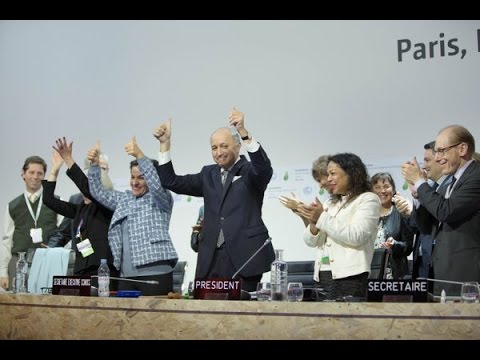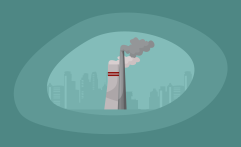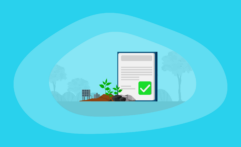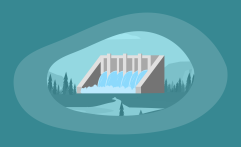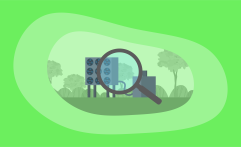The History of Wind Energy: The Big Picture
Impactful Ninja is reader-supported. When you buy through links on our site, we may earn an affiliate commission.
Learn more
Learn more
.
Hey fellow impactful ninja ? You may have noticed that Impactful Ninja is all about providing helpful information to make a positive impact on the world and society. And that we love to link back to where we found all the information for each of our posts. Most of these links are informational-based for you to check out their primary sources with one click. But some of these links are so-called "affiliate links" to products that we recommend. First and foremost, because we believe that they add value to you. For example, when we wrote a post about the environmental impact of long showers, we came across an EPA recommendation to use WaterSense showerheads. So we linked to where you can find them. Or, for many of our posts, we also link to our favorite books on that topic so that you can get a much more holistic overview than one single blog post could provide. And when there is an affiliate program for these products, we sign up for it. For example, as Amazon Associates, we earn from qualifying purchases. First, and most importantly, we still only recommend products that we believe add value for you. When you buy something through one of our affiliate links, we may earn a small commission - but at no additional costs to you. And when you buy something through a link that is not an affiliate link, we won’t receive any commission but we’ll still be happy to have helped you. When we find products that we believe add value to you and the seller has an affiliate program, we sign up for it. When you buy something through one of our affiliate links, we may earn a small commission (at no extra costs to you). And at this point in time, all money is reinvested in sharing the most helpful content with you. This includes all operating costs for running this site and the content creation itself. You may have noticed by the way Impactful Ninja is operated that money is not the driving factor behind it. It is a passion project of mine and I love to share helpful information with you to make a positive impact on the world and society. However, it's a project in that I invest a lot of time and also quite some money. Eventually, my dream is to one day turn this passion project into my full-time job and provide even more helpful information. But that's still a long time to go. Stay impactful,Affiliate Disclosure
Why do we add these product links?
What do these affiliate links mean for you?
What do these affiliate links mean for us?
What does this mean for me personally?
![]()
Wind energy is one of our fastest-growing renewable energy sources with low levels of carbon dioxide (CO2) emissions. Its history dates back thousands of years, and it has evolved into our leading non-hydro renewable energy technology today. So, we had to ask: What is the history of wind energy?
The history of wind energy began in 5,000 B.C. to facilitate transportation and food production. The invention and commercial development of wind turbines in the late 1800s and the Paris Climate Agreement in 2015 have helped wind energy become our leading non-hydro renewable energy technology.
One way to combat the current global climate crisis threatening Earth’s environmental, economic, and social health is to transition away from traditional fossil fuels and toward renewable energy sources, such as wind energy. Keep reading to learn how wind energy came to be, who and what pioneered its development, how effective it has been thus far, and what the future of wind energy could entail.
Here’s the History of Wind Energy in a Nutshell
Wind is a form of solar energy that is caused by the uneven heating of the earth’s surface, irregularities of the earth’s surface, and the earth’s rotation. Wind energy is defined as the conversion of moving air into electrical energy through the use of wind turbines.
“Wind energy: electrical energy obtained from harnessing the wind with windmills or wind turbines”
Oxford Dictionary
Wind energy is classified as a renewable energy source because the resource (wind) naturally replaces itself over time. Renewable energies make up an ever-growing amount of total energy consumption and play a vital role in combating climate change.
Wind energy has gone through three distinct development phases in its development:
- Early market formation and innovation: The early history of wind energy dates back to 5,000 B.C. when the wind was used to facilitate transportation/food production and to accomplish everyday tasks such as pumping water and cutting wood.
- Consolidation and strengthening: The invention of wind turbines for electricity generation, scientific advances to increase the size and efficiency of wind turbines, and the establishment of the first onshore and offshore wind farms helped to shape the wind energy market.
- Mainstreaming: Wind energy began to establish itself as a part of the mainstream electricity industry at the turn of the century, when the focus shifted towards rapidly scaling commercial wind farms. The establishment of the Global Wind Energy Council (GWEC), the International Renewable Energy Agency (IRENA), and the Global Offshore Wind Alliance (GOWA) helped to regulate the wind energy market.
| Wind Energy Milestones | Historical Event |
| Initial start | The early history of wind energy dates back to 5,000 BC when the wind was used to facilitate transportation/food production and to accomplish everyday tasks such as pumping water and cutting wood. |
| Milestones in wind energy development | 1887: The first wind turbine for electricity generation was developed. 1920s: The first vertical axis wind turbine was developed. 1941: The first megawatt (MW) turbine was constructed and connected to the US power grid. 1980: The world’s first onshore wind farm was constructed in New Hampshire (US). 1991: The world’s first offshore wind farm, the Vindeby Wind Farm, was constructed in Denmark. |
| Current status | Currently, wind energy is the cheapest, fastest-growing, and leading non-hydro renewable energy technology. Global installed wind capacity (onshore + offshore) has surpassed 900 gigawatts (GW). |
| Future outlook | The future of wind energy will be heavily influenced by increasing policy and private-sector efforts, facilitating the permitting of onshore wind energy, and reducing offshore wind costs. |
| Key policy developments | 1974: International Energy Agency (IEA) 2005: Global Wind Energy Council (GWEC) 2009: The International Renewable Energy Agency (IRENA) 2012: Wind Europe 2015: Paris Climate Agreement 2022: The Global Offshore Wind Alliance (GOWA) |
Understanding wind energy’s history can provide insight into how it has evolved into the renewable energy source it is today.
When and How Did Wind Energy Get Started
The early history of wind energy includes using wind as a form of transportation, for food production, or to accomplish everyday tasks.
5,000 B.C.: Wind is used to power sailboats down the Nile River in Egypt.
900-500 B.C.: China uses wind-powered water pumps; Persia and the Middle East use windmills with woven-reed blades to grind grains.
1,000 A.D.: Wind technology makes its way to Europe, where windmills are used to produce food, pump water, grind wheat and grains, and cut wood.
1,300 A.D.: Windmills in the Netherlands are used to drain areas of the Rhine River delta.
Although humans have been using wind for centuries, it wasn’t until the late 1800s that we began using wind as a way to generate electricity.
How Has Wind Energy Developed Over Time
Wind energy has become the cheapest, fastest-growing, and leading non-hydro renewable energy technology with a low carbon emissions profile due to research and development, policies, and decreasing costs.
What Are Milestones in Wind Energy Development
The invention of the first wind turbine for electricity generation in the late 1800s spurred the development of wind energy.
July 1887: Scottish physicist James Blythe built the first wind turbine for electricity generation, which he then used to power his home. Blythe attempted to share the electricity with his village, but they deemed his invention to be ‘the work of the devil’, so the technology never really caught on.
Winter 1887: American Professor Charles F. Brush built the first automatically operated, 12 kW wind turbine. His model was significantly larger and more technical than Blythe’s, and it was used from 1888-1900.
1890s: Danish scientist Poul la Cour discovered that wind turbines can be used for large-scale electricity generation. He founded the Society of Wind Electricians in 1903 and aimed to bring electricity to the rural population of Denmark. La Cour is widely known as the father of modern wind energy.
1920s: Frenchman George Darrieus invented the first vertical axis wind turbine. This design is often referred to as the “eggbeater windmill” and is still used today.
1941: The first megawatt (MW) turbine, with 75-foot blades, was constructed and connected to the power grid in Vermont (US). This was the largest known wind turbine at the time.
1970s: The National Aeronautics and Space Administration (NASA), began its research into large-scale commercial wind turbines with the implementation of 13 experimental turbines. This research paved the way for many technologies still used today.
1980: The world’s first onshore wind farm, consisting of 20 wind turbines, was constructed in New Hampshire (US).
1991: The world’s first offshore wind farm, the Vindeby Wind Farm, was constructed in Denmark.
It wasn’t until the turn of the century that wind energy began to establish itself as a part of the mainstream electricity industry, with the focus shifting away from research and development and instead toward rapid scalability.
How Has the Wind Energy Market Developed Recently
The start of the 21st century saw a shift in focus to increasing wind energy capacity worldwide. Installed capacity increased from 17.6 gigawatts (GW) in 2000, to 197 GW in 2010, to 740 GW in 2020.
In more recent years, global wind energy capacity has continued to increase:
In 2019: 60.4 gigawatts (GW) of wind energy capacity was installed globally, a 19% increase from installations in 2018. The total capacity for wind energy globally was over 651 GW.
In 2020: 93 GW of wind energy capacity was installed globally, a 53% increase from installations in 2019. The total capacity for wind energy globally was over 743 GW.
In 2021: 94 GW of wind energy capacity was installed globally, a marginal increase from installations in 2020. The total capacity for wind energy globally was over 837 GW.
In 2022: 78 GW of wind energy capacity was installed globally, a 9% decrease from installations in 2021. The total capacity for wind energy globally was over 906 GW.
Experts predict we will install more than 100 GW of wind energy capacity in 2023 and 680 GW of new capacity in the next five years, between 2023 and 2027.
What Is the Present Status of Wind Energy
There are five countries that together account for nearly 600 GW, or two-thirds of our global wind energy capacity, which surpassed 900 GW in 2022. Roughly 93% (837 GW) came from onshore wind systems and 7% (63 GW) from offshore wind systems.
The five largest wind energy-producing countries (GW per year) in the world are:
- China – 329 GW
- US – 132 GW
- Germany – 64 GW
- India – 40 GW
- Spain – 27.5 GW
In 2022, electricity generation from wind increased by 265 TWh (14%) to reach 2,700 TWh. China and The United States together were responsible for 62% of wind generation growth, followed by a 14% growth in The European Union.
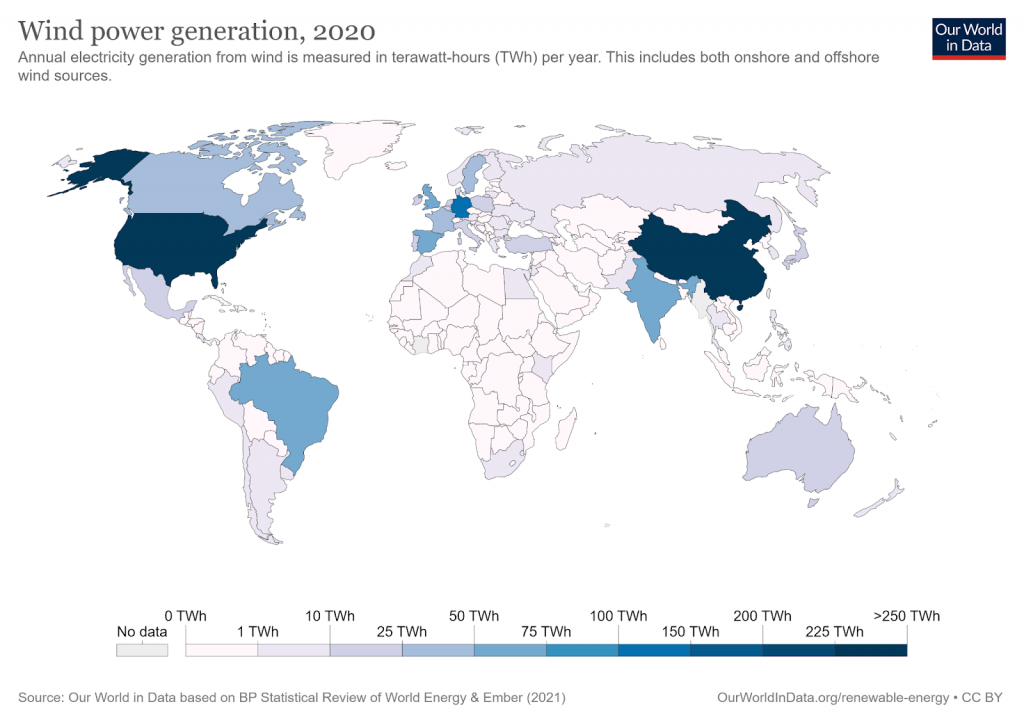
Traditionally, onshore wind has dominated the market; however, technological improvements and reduced costs have allowed offshore wind to begin to occupy an increasingly larger share of the market, although it still lags far behind onshore wind. Offshore wind currently makes up approximately 10% of total wind energy generation.

In terms of funding, global wind energy investment reached a record high of $185 billion in 2022, a 20% increase from the year prior. China, India, the United States, and the European Union have all increased their support for wind energy policies in recent years.
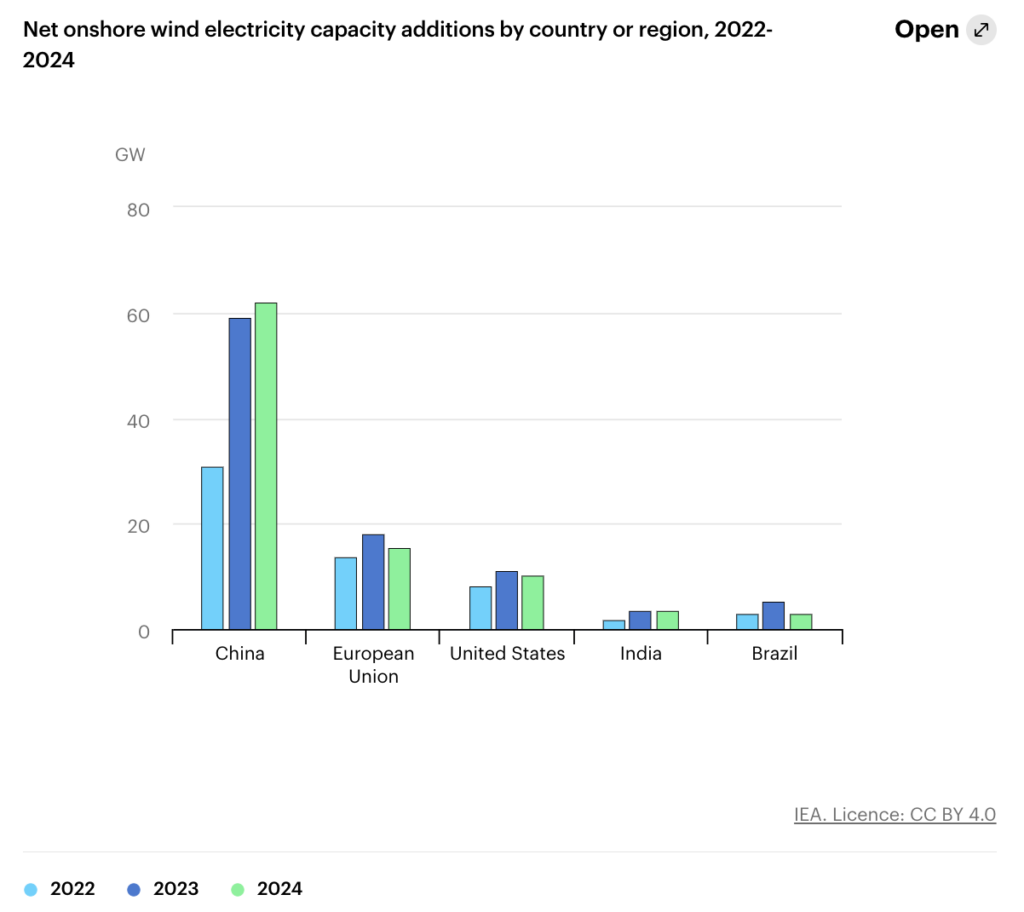
How Will the Future of Wind Energy Look Like
The future of wind energy will be heavily influenced by increasing policy and private-sector efforts, facilitating the permitting of onshore wind energy, and reducing offshore wind costs.
How Wind Energy Will Likely Develop in the Future
Experts believe that wind and solar energy projects are on track to contribute more than one-third of the world’s electricity by 2030. Wind energy is poised to become the world’s foremost energy generation source because it:
- Is cost-effective: Onshore wind energy is one of the lowest-priced energy sources on the market, and costs are predicted to continue to decrease due to research and development.
- Has a low carbon footprint: Wind energy has the lowest carbon footprint of all energy types. On a life-cycle basis, onshore wind emits 11, and offshore wind emits 12 grams of CO2 equivalent per kWh of electricity produced, the joint-lowest out of all fuel types.
- Doesn’t use or contaminate water: Wind farms do not need a water source, which makes them drought-resistant, in a time where scarcity of water is common. Wind turbines also do not release emissions that can contaminate surface or groundwater.
- Is space efficient: Wind farms themselves are often large and require many individual wind turbines, but the turbines themselves do not take up a lot of space. Because turbines must be spaced at specific distances apart, this means that the land in between can be used for other purposes.
What Policies Are Put in Place to Support Wind Energy Usage
The most well-known piece of legally binding, international climate mitigation legislation is The Paris Agreement, the goal of which is to limit global warming to below 2 degrees Celsius (C), preferably to 1.5C, compared to pre-industrial levels.
The Paris Agreement specifically notes a transition towards renewable energies, as being a critical part of meeting these goals.
Check out the highlights of the 2015 COP21 directly from the UN Climate Change channel:
In addition, The International Energy Agency’s (IEA) Net Zero Emissions by 2050 Scenario is one framework for the global energy sector to achieve net zero CO2 emissions by 2050 and universal energy access by 2030.
To meet the targets identified in the net zero by 2050 scenario, wind power generation must increase roughly 17% per year from 2023-2030.
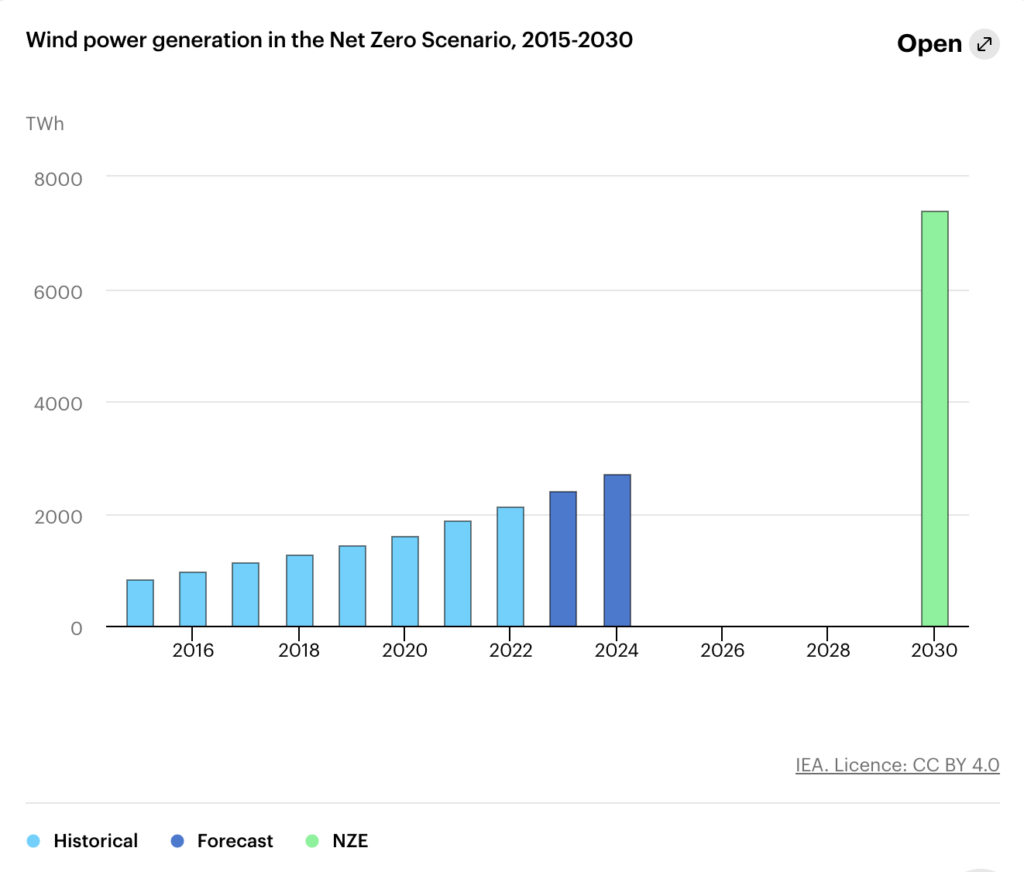
There are many global and country-specific wind energy policies and organizations aimed at meeting the 2050 net zero scenario, including:
- 1974 – International Energy Agency (IEA): The IEA was founded in response to the major oil disruptions in 1974. They promote international energy cooperation, including wind energy, and are made up of 31 member countries.
- 1974 – The American Clean Power Association (ACPA): Formerly known as the American Wind Energy Association, the ACPA champions solar, wind, and green hydrogen energy in the US.
- 2001 – World Wind Energy Association (WWEA): WWEA is an international non-profit association working toward the global deployment of wind energy technologies.
- 2005 – Global Wind Energy Council (GWEC): The GWEC was founded as an international trade association for the wind power industry. Their members represent 99% of the global installed wind power capacity.
- 2009: The International Renewable Energy Agency (IRENA): IRENA was founded as a global intergovernmental agency focused on scaling renewable energy. It is comprised of 167 member countries as well as the European Union.
- 2012 – Wind Europe: Wind Europe was founded as an organization that coordinates international policy, communications, and research and analysis for wind energy in Europe.
- 2016 – Asia Wind Energy Association (AWEA): The AWEA was established as the leading industry association for the wind energy sector in the Asia-Pacific region.
- 2022 – The Global Offshore Wind Alliance (GOWA): GOWA was founded by Denmark, the International Renewable Energy Agency (IRENA), and the GWEC. Their goal is to achieve 380 GW of total global offshore wind capacity by 2030.
If you are interested in learning more about country-specific wind energy policies, you can visit the IEA’s wind policy database.
What Are Currently the Different Types of Wind Energy
There are two main types of wind energy:
- Onshore wind energy: Wind turbines are located on land. Construction, transportation, maintenance cost, and infrastructure needed to transmit electricity from onshore turbines to consumers is low.
The current largest onshore wind farm in the world is the Gansu wind farm located in China. It consists of roughly 7,000 wind turbines across multiple wind farms Although it is still under construction, the planned capacity is 20 (gigawatts) GW, and the current installed capacity is 8 GW.
- Offshore wind energy: Wind turbines are located in the ocean or freshwater. Construction, transportation, maintenance cost, and infrastructure needed to transmit electricity from offshore turbines to consumers is high. Offshore turbines are considerably larger than onshore turbines and can cost up to 20% more, and noise pollution, land use, and wildlife impact concerns are minimal compared to onshore turbines.
The current largest offshore wind farm in the world is the Walney Extension wind farm located in the Irish Sea. Covering 56 square miles (149 square kilometers), the 87 wind turbines have an electricity generation potential of 659 megawatts (MW) of power.
To harness wind energy, the wind turns wind turbine blades around a rotor, which spins a generator to create electricity. The two types of wind turbines are:
- Horizontal axis wind turbine (HAWT): Blades are assembled on a horizontal axis parallel to the ground. They can only receive and process wind head-on.
- Vertical axis wind turbine (VAWT): Blades are assembled on a vertical axis perpendicular to the ground. They can receive and process wind from all directions, giving them a greater energy generation potential.
Wind turbines can also be divided into three categories based on how much power they are capable of generating:
- Small (individual) turbines: These can produce up to 100 kilowatts (kW) of power, which is enough to power a home or a water pumping station.
- Large turbines: These consist of 260-foot (80-meter (m)) tall towers and 130-foot (40m) long blades that can generate up to 1.8 MW of power.
- Commercial turbines: These consist of 780-foot (240 m) tall towers and 530-foot (162 m) long blades that can generate anywhere from 4.8 to 9.5 MW of power.
Final Thoughts
Wind energy has a long history that dates back to 5,000 B.C., when it was initially used to facilitate transportation and food production. The invention of the wind turbine for electricity generation in the late 1800s kicked off wind energy’s rise in the global market.
Over time, wind energy has become the cheapest, fastest-growing, and leading non-hydro renewable energy technology with a low carbon emissions profile. The formation of the International Energy and International Renewable Energy agencies plus the implementation of the Paris Climate Agreement Climate have propelled wind energy into the spotlight as one replacement for traditional fossil fuels.
Wind energy is poised to see continued growth in the future as we look to reduce greenhouse gas emissions to levels stated in the Paris Agreement. Increasing policy and private-sector efforts, facilitating the permitting of onshore wind energy, and reducing offshore wind costs will be crucial to meeting wind energy-related climate goals.
Stay impactful,

Sources
- Office of Energy Efficiency & Renewable Energy: How Do Wind Turbines Work?
- Impactful Ninja: Renewable Energy Explained: All You Need to Know
- The Global Wind Energy Council: Homepage
- The International Renewable Energy Agency: Homepage
- The Global Offshore Wind Alliance: Homepage
- International Renewable Energy Agency: Wind Energy
- International Energy Agency: Wind
- Environment: The History of Wind Energy in the United States
- Encyclopedia: History of Wind Power
- The Guardian: Timeline – The history of wind power
- NES Fircroft: A Brief History Of Wind Power
- Wind Power Plus: Poul la Cour – Father of modern wind energy
- Jacob Winds Electric: Homepage
- The National Aeronautics and Space Administration: Homepage
- Wind Europe: Built in 1991, Vindeby in Denmark was the world’s first offshore wind farm
- REVE: The wind power market expanded substantially in the 2000s
- International Energy Agency: IEA wind energy annual report 2000
- Global Wind Energy Council: Global wind report – Annual market update 2010
- Global Wind Energy Council: Global Wind Report 2021
- Global Wind Energy Council: Global offshore wind report 2020
- Global Wind Energy Council: Global Wind Report 2022
- Global Wind Energy Council: Global Wind Report 2023
- REVE: Countries That Produce the Most Wind Energy
- Our World in Data: Wind Power Generation, 2022
- International Energy Agency: Wind power capacity in the Net Zero Scenario, 2015-2030
- International Energy Agency: Net onshore wind electricity capacity additions by country or region, 2022-2024
- Reuters: Wind and solar to produce over a third of global power by 2030, report says
- World Nuclear Association: Carbon dioxide emissions from electricity
- The Renewable Energy Institute: 9 Reasons Wind Power is Still the Future of Green Energy
- United Nations Framework Convention on Climate Change: The Paris Agreement
- The International Energy Agency: Homepage
- The International Energy Agency: Net Zero Emissions by 2050 Scenario
- International Energy Agency: Wind power generation in the Net Zero Scenario, 2015-2030
- The American Clean Power Association: Homepage
- The World Wind Energy Association: Homepage
- Wind Europe: Homepage
- The Asia Wind Energy Association: Homepage
- The International Energy Agency: Policies Database
- Kiwi Energy: Differences Between Onshore & Offshore Wind Energy
- NS Energy: Profiling ten of the biggest onshore wind farms in the world
- National Geographic: Wind Energy
- Conserve Energy Future: The Comparison of Horizontal and Vertical Axis Wind Turbines
- Impactful Ninja: Wind Energy Explained: All You Need to Know
